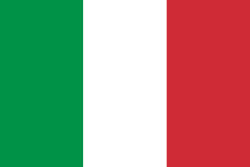Origine et historique
La tomate est une plante annuelle originaire d’Amérique du Sud, en particulier des régions qui font aujourd’hui partie du Pérou et de l’Équateur. L’introduction de la tomate en Europe au XVIe siècle par les explorateurs espagnols et portugais a marqué le début de sa diffusion à travers le monde.
Au départ, elle était considérée comme une curiosité botanique et ornementale, et certains la pensaient même toxique. Cependant, avec le temps, la tomate a gagné en popularité, notamment dans la cuisine italienne, où elle est devenue l’ingrédient clé.
Comment semer et planter les tomates ?
Les tomates nécessitent un climat doux, du soleil, de l’eau et des sols riches.
Semez les graines en pot de semis de début mars à début avril à une profondeur de 0,3 cm. La température de germination idéale se situe entre 20°C et 25°C. Elles lèvent en général dans les deux semaines.
Placez les plantons près d’une source de lumière, sans quoi ils risquent de s’étioler. Si les feuilles jaunissent lorsque les plantons se développent, ajoutez un peu d’engrais liquide à l’arrosage. Si vos plantons se font attaquer par les sciarides, traitez avec du Solbac.
Après le 15 mai, vous pourrez planter vos tomates en pleine terre, sous abri ou en pot. Laissez une distance d’environ 50 cm entre les tomates. Ajoutez du compost, du fumier ou de l’engrais organique directement lors de la plantation.
Comment cultiver les tomates ?
Les tomates nécessitent des soins attentifs pour une croissance réussie. Maintenez le sol uniformément humide, en évitant de mouiller les feuilles, afin de réduire le risque de maladies.
L’arrosage régulier est essentiel pour une croissance saine. Vous pourrez réduire la fréquence d’arrosage en paillant le sol tout autour de vos tomates. Ceci réduira davantage l’apparition de maladies comme le mildiou de la tomate.
Taillez régulièrement les gourmands qui se développent entre l’axe principal et les feuilles. Ceci favorise la formation de fruits, améliore le goût et assure une bonne circulation de l’air entre les plantes. Utilisez des tuteurs pour soutenir les plantes à mesure qu’elles grandissent. Si vous n’avez que quelques plantes, une pollinisation manuelle avec coton tige peut améliorer le rendement.
Comment récolter et utiliser les tomates ?
Récoltez les fruits lorsqu’ils sont bien mûrs et qu’ils ont atteint leur couleur caractéristique. Les tomates sont polyvalentes en cuisine et peuvent être utilisées crues dans des salades, des sandwichs ou des salsas. Elles sont également transformées en sauces, en conserves, en soupes et en jus. Les tomates séchées au soleil sont une délicieuse collation et un ingrédient populaire dans de nombreux plats méditerranéens.
Herkunft und Geschichte
Die Tomate ist eine einjährige Pflanze, die ursprünglich aus Südamerika stammt, insbesondere aus Gebieten, die heute Teil von Peru und Ecuador sind. Die Einführung der Tomate in Europa im 16. Jahrhundert durch spanische und portugiesische Entdecker markierte den Beginn ihrer Verbreitung auf der ganzen Welt.
Anfangs wurde sie als botanische Kuriosität und Zierpflanze angesehen, und einige hielten sie sogar für giftig. Mit der Zeit gewann die Tomate jedoch an Popularität, insbesondere in der italienischen Küche, wo sie zu einer Schlüsselzutat wurde.
Wie sät und pflanzt man Tomaten?
Tomaten benötigen ein mildes Klima, viel Sonne, ausreichend Wasser und nährstoffreiche Böden.
Säen Sie die Samen in Anzuchttöpfen von Anfang März bis Anfang April in einer Tiefe von 0,3 cm aus. Die ideale Keimtemperatur liegt zwischen 20°C und 25°C. Die Keimung erfolgt in der Regel innerhalb von zwei Wochen.
Stellen Sie die gekeimten Samen in die Nähe einer Lichtquelle, da sie sonst verkümmern. Wenn die Blätter gelb werden, während die Setzlinge wachsen, fügen Sie etwas Flüssigdünger zum Giesswasser hinzu. Bei Befall durch Trauermücken behandeln Sie mit Solbac.
Nach dem 15. Mai können Sie Ihre Tomaten ins Freien, ins Gewächshaus oder in Töpfe pflanzen. Lassen Sie etwa 50 cm Platz zwischen den Tomatenpflanzen. Fügen Sie beim Pflanzen direkt Kompost, Mist oder organischen Dünger hinzu.
Wie pflegt man Tomaten?
Tomaten erfordern für ein erfolgreiches Wachstum sorgfältige Pflege. Halten Sie den Bodengleichmässig feucht, vermeiden Sie jedoch das Benetzen der Blätter, um das Risiko von Krankheiten zu reduzieren. Regelmässige Bewässerung ist für gesundes Wachstum unerlässlich. Dank einer Mulchschicht um Ihre Tomaten herum, können Sie die Bewässerungsfrequenz deutlich reduzieren. Dies reduziert auch das Risiko von Kraut- und Braunfäule.
Schneiden Sie regelmässig die Seitentriebe, die zwischen dem Hauptstamm und den Blättern wachsen, zurück. Dies fördert die Fruchtbildung, verbessert den Geschmack und gewährleistet eine gute Luftzirkulation zwischen den Pflanzen. Wir empfehlen ebenfalls, Ihre Pflanzen aufzubinden, um ein gesundes Wachstum zu fördern.
Wie erntet und verwendet man Tomaten?
Ernten Sie die Früchte, wenn sie reif sind und ihre charakteristische Farbe erreicht haben. Tomaten sind vielseitig in der Küche und können roh in Salaten, Sandwiches oder Salsas verwendet werden. Sie werden auch zu Saucen, Konserven, Suppen und Säften verarbeitet. Getrocknete Tomaten sind ein köstlicher Snack und eine beliebte Zutat in vielen mediterranen Gerichten.
Origin and History
The tomato is an annual plant native to South America, particularly from regions that today are part of Peru and Ecuador. The introduction of the tomato to Europe in the 16th century by Spanish and Portuguese explorers marked the beginning of its spread across the world.
Initially, it was considered a botanical curiosity and ornamental plant, and some even thought it was toxic. However, over time, the tomato gained popularity, especially in Italian cuisine, where it became a key ingredient.
How to Sow and Plant Tomatoes?
Tomatoes require a mild climate, sunshine, water, and rich soils.
Sow the seeds in seedling pots from early March to early April at a depth of 0.3 cm. The ideal germination temperature is between 20°C and 25°C. They generally sprout within two weeks.
Place the seedlings near a light source, otherwise, they might become leggy. If the leaves yellow as the seedlings grow, add some liquid fertilizer to the watering. If your seedlings are attacked by fungus gnats, treat with Solbac.
After May 15th, you can plant your tomatoes in the open ground, under cover, or in pots. Leave about 50 cm between tomatoes. Add compost, manure, or organic fertilizer directly at planting.
How to Cultivate Tomatoes?
Tomatoes require careful attention for successful growth. Keep the soil evenly moist, avoiding wetting the leaves, to reduce the risk of diseases.
Regular watering is essential for healthy growth. You can reduce the frequency of watering by mulching the soil all around your tomatoes. This further reduces the occurrence of diseases like tomato blight.
Regularly prune the suckers that develop between the main stem and the leaves. This promotes fruit formation, improves taste, and ensures good air circulation between the plants. Use stakes to support the plants as they grow. If you have only a few plants, manual pollination with a cotton swab can improve yield.
How to Harvest and Use Tomatoes?
Harvest the fruits when they are fully ripe and have reached their characteristic color. Tomatoes are versatile in the kitchen and can be used raw in salads, sandwiches, or salsas. They are also transformed into sauces, preserves, soups, and juices. Sun-dried tomatoes are a delicious snack and a popular ingredient in many Mediterranean dishes.
Origine e Storia
Il pomodoro è una pianta annuale originaria del Sud America, in particolare dalle regioni che oggi fanno parte del Perù e dell'Ecuador. L'introduzione del pomodoro in Europa nel XVI secolo dagli esploratori spagnoli e portoghesi ha segnato l'inizio della sua diffusione in tutto il mondo.
Inizialmente, era considerato una curiosità botanica e una pianta ornamentale, e alcuni pensavano addirittura che fosse tossico. Tuttavia, col tempo, il pomodoro ha guadagnato popolarità, specialmente nella cucina italiana, dove è diventato un ingrediente chiave.
Come seminare e piantare i pomodori?
I pomodori richiedono un clima mite, sole, acqua e terreni ricchi.
Seminate i semi in vasi di semina da inizio marzo a inizio aprile a una profondità di 0,3 cm. La temperatura di germinazione ideale è tra i 20°C e i 25°C. Generalmente germogliano entro due settimane.
Posizionate i piantini vicino a una fonte di luce, altrimenti potrebbero etiolarsi. Se le foglie ingialliscono mentre i piantini crescono, aggiungete un po' di fertilizzante liquido all'acqua di irrigazione. Se i vostri piantini vengono attaccati dai funghi, trattate con Solbac.
Dopo il 15 maggio, potete piantare i vostri pomodori in piena terra, sotto copertura o in vaso. Lasciate circa 50 cm tra un pomodoro e l'altro. Aggiungete compost, letame o fertilizzante organico direttamente durante la piantagione.
Come coltivare i pomodori?
I pomodori richiedono cure attente per una crescita di successo. Mantenete il suolo uniformemente umido, evitando di bagnare le foglie, per ridurre il rischio di malattie.
L'irrigazione regolare è essenziale per una crescita sana. Potete ridurre la frequenza di irrigazione pacciamando il suolo intorno ai vostri pomodori. Ciò riduce ulteriormente l'apparizione di malattie come la peronospora del pomodoro.
Potate regolarmente i succhioni che si sviluppano tra il fusto principale e le foglie. Ciò favorisce la formazione dei frutti, migliora il gusto e assicura una buona circolazione dell'aria tra le piante. Utilizzate dei tutori per sostenere le piante man mano che crescono. Se avete solo poche piante, una impollinazione manuale con un batuffolo di cotone può migliorare la resa.
Come raccogliere e utilizzare i pomodori?
Raccogliete i frutti quando sono ben maturi e hanno raggiunto il loro colore caratteristico. I pomodori sono versatili in cucina e possono essere utilizzati crudi in insalate, panini o salse. Sono anche trasformati in salse, conserve, zuppe e succhi. I pomodori secchi al sole sono uno snack delizioso e un ingrediente popolare in molti piatti mediterranei.




La culture des tomates de A-Z